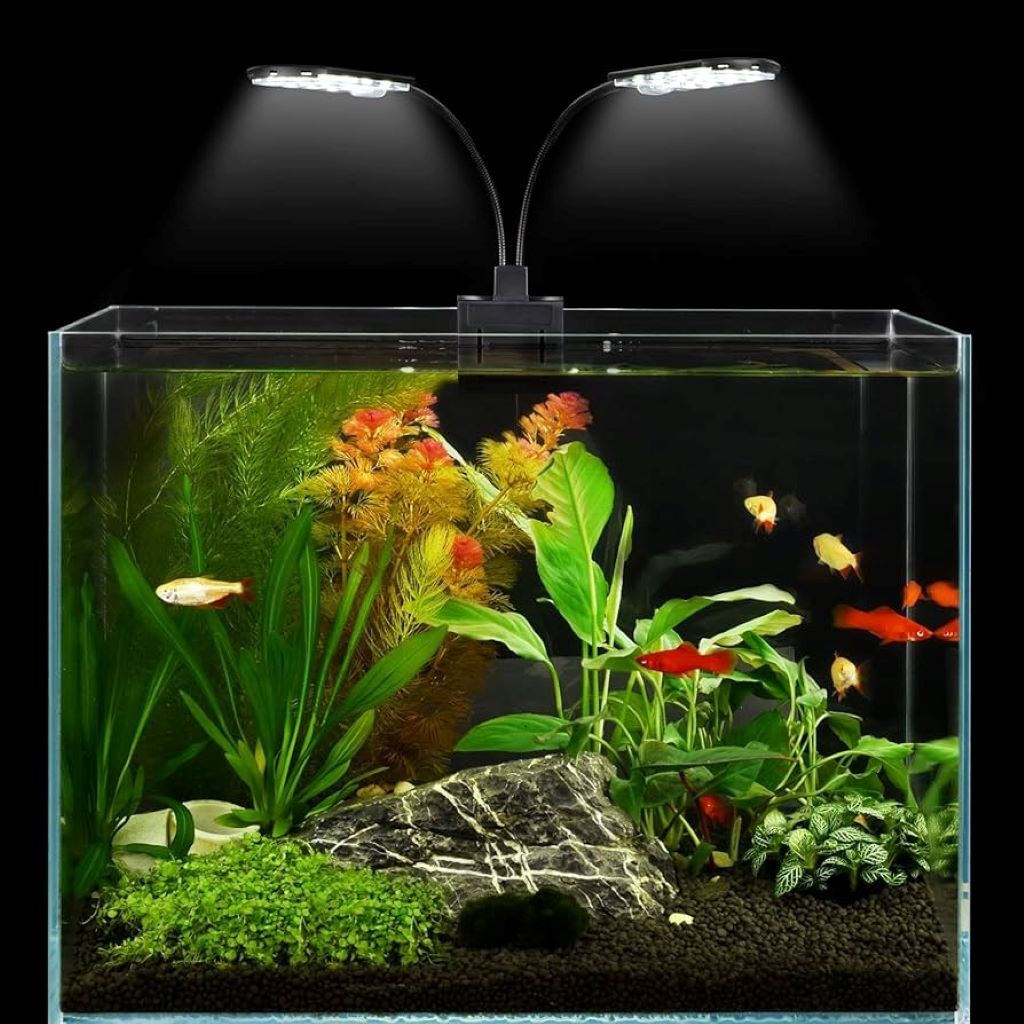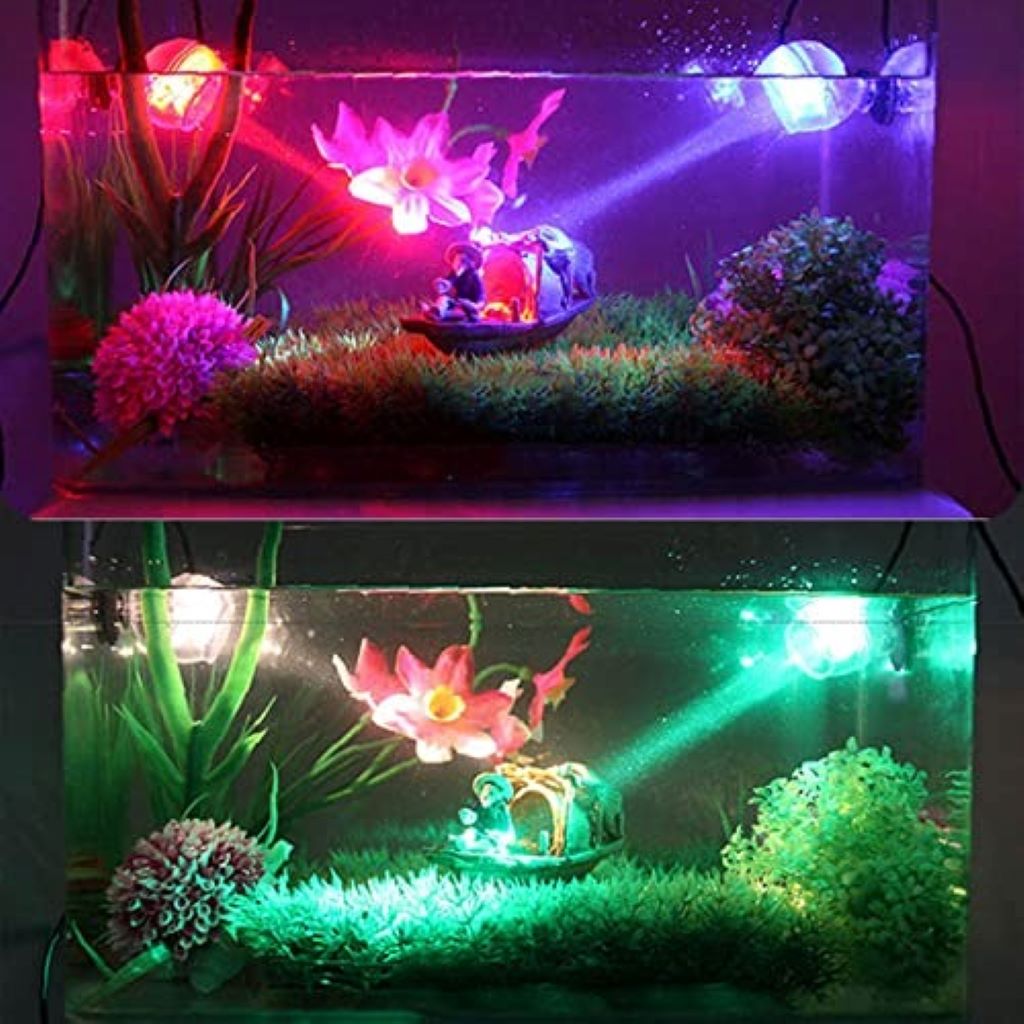Aquarium lighting is a critical aspect of maintaining a thriving aquatic environment, whether you’re cultivating a lush planted freshwater tank or a vibrant coral reef. While the type of bulb (LED, fluorescent, metal halide) plays a significant role, the unsung hero of optimal illumination is often the aquarium light reflector. Shining a light on aquarium reflectors , these seemingly simple devices can dramatically impact the efficiency and effectiveness of your lighting system, influencing plant growth, coral health, and overall aesthetics. This comprehensive guide delves into the world of aquarium light reflectors, exploring their various types, advantages, disadvantages, and key factors to consider when choosing the perfect one for your aquatic haven.
What are Aquarium Light Reflectors and Why are They Important?
In essence, an aquarium light reflector is a reflective surface positioned above your aquarium lights. Its primary function is to capture and redirect light that would otherwise be lost upwards and outwards, focusing it back down into the tank. This simple mechanism offers several benefits:
- Increased Light Intensity: By minimizing light spillage, reflectors effectively increase the amount of light reaching your aquarium inhabitants. This is crucial for photosynthesis in plants and the growth and coloration of corals.
- Improved Light Distribution: Reflectors help create a more even spread of light across the tank, reducing shadowy areas and ensuring consistent illumination for all organisms.
- Enhanced Energy Efficiency: By maximizing light utilization, reflectors can help you achieve the desired level of brightness with lower wattage bulbs, saving energy and reducing costs.
- Reduced Algae Growth: Efficient light utilization can help prevent excessive algae growth by minimizing light spill into areas where algae may thrive.
Types of Aquarium Light Reflectors:
Aquarium light reflectors come in various shapes, sizes, and materials, each with its own set of pros and cons. The most common types include:
-
Polished Aluminum Reflectors:
- Pros:
- Highly reflective, maximizing light output.
- Durable and corrosion-resistant.
- Relatively affordable.
- Cons:
- Can create hotspots if not designed properly.
- Prone to scratches and dents.
- May tarnish over time, reducing reflectivity.
-
Hammered Aluminum Reflectors:
- Pros:
- Similar reflectivity to polished aluminum.
- The textured surface helps diffuse light more evenly, reducing hotspots.
- More resistant to scratches and dents.
- Cons:
- Slightly less reflective than polished aluminum.
- Can be more expensive.
-
Mirror Finish Reflectors:
- Pros:
- Extremely high reflectivity, exceeding that of aluminum.
- Provides excellent light distribution.
- Cons:
- More fragile and prone to damage.
- Can be more expensive.
- May require more frequent cleaning to maintain reflectivity.
-
Acrylic Reflectors:
- Pros:
- Lightweight and easy to work with.
- Can be molded into various shapes for customized applications.
- Relatively inexpensive.
- Cons:
- Less reflective than aluminum or mirror finishes.
- Prone to scratching and yellowing over time.
Choosing the Right Reflector for Your Aquarium:
Selecting the ideal reflector depends on several factors, including:
- Type of Lighting: The type of bulb you use (LED, T5, metal halide) will influence the shape and size of the reflector needed.
- Aquarium Dimensions: Larger tanks require reflectors that can effectively distribute light over a wider area.
- Aquascaping and Inhabitants: The height and density of plants or corals will affect the amount of light needed and the desired light distribution.
- Budget: Reflectors range in price from budget-friendly DIY options to high-end commercial models.
DIY Aquarium Light Reflectors:
For the budget-conscious aquarist or those seeking a customized solution, building a DIY reflector is a viable option. Common materials include:
- Aluminum Foil: A readily available and inexpensive option, though less durable and reflective than other materials.
- Mylar: A highly reflective material often used in gardening and photography, offering excellent light reflection.
- PVC Sheets: Can be used as a base for attaching reflective materials, providing a sturdy and customizable structure.
Popular Commercial Aquarium Light Reflectors:

Several manufacturers offer high-quality aquarium light reflectors designed for various lighting systems and tank sizes. Some popular brands and models include:
- IceCap Reflectors: Known for their high reflectivity and efficient design, particularly for T5 fluorescent bulbs.
- Hamilton Technology Reflectors: Offer a range of reflectors for metal halide and LED lighting, with options for different tank depths and coral requirements.
- AquaticLife Reflectors: Provide a variety of reflectors for T5 and LED lighting, with features like adjustable width and individual bulb reflectors.
- Finnex Reflectors: Offer sleek and modern reflectors designed for their popular line of planted tank LED lights.
Pros and Cons of Different Reflector Types:
| Reflector Type | Pros | Cons |
| Polished Aluminum | Highly reflective, affordable, durable | Hotspots, scratches, tarnishing |
| Hammered Aluminum | Diffused light, durable, scratch-resistant | Slightly less reflective, more expensive |
| Mirror Finish | Extremely high reflectivity, excellent light distribution | Fragile, expensive, requires frequent cleaning |
| Acrylic | Lightweight, customizable, inexpensive | Less reflective, scratching, yellowing |
| DIY Reflectors | Affordable, customizable | Less durable, potentially lower reflectivity |
Export to Sheets
Reviews of Popular Aquarium Light Reflectors:
- IceCap 430 Reflector: Highly praised for its excellent reflectivity and build quality, specifically designed for T5 HO bulbs. Users report significant improvements in PAR (Photosynthetically Active Radiation) levels and coral growth.
- Hamilton Technology Cebu Sun Reflector: A popular choice for metal halide lighting, offering excellent light penetration and even distribution for deeper tanks. Reviewers appreciate its sturdy construction and adjustable features.
- AquaticLife T5 HO Reflector: Well-regarded for its versatility, with adjustable width and individual bulb reflectors to customize light spread. Users find it effective for both freshwater planted tanks and saltwater reef aquariums.
How to Install LED Reef Aquarium Lighting: A Comprehensive Guide
FAQs about Aquarium Light Reflectors:
-
Do I need a reflector for my aquarium light?
While not strictly necessary, reflectors significantly enhance the efficiency and effectiveness of your lighting system, particularly for demanding plants and corals. They can lead to better growth, coloration, and overall health for your aquarium inhabitants.
-
Can I use any reflector with any light?
No, reflectors are often designed for specific types of bulbs and fixtures. Ensure compatibility between your reflector and lighting system before purchasing.
-
How do I clean my aquarium light reflector?
Regularly wipe down your reflector with a soft, damp cloth to remove dust and salt buildup. Avoid abrasive cleaners that can scratch the reflective surface.
-
Can I make my own aquarium light reflector?
Yes, DIY reflectors are a cost-effective option. Utilize materials like aluminum foil, mylar, or PVC sheets to create a reflective surface above your lights.
-
How do I know if my reflector is working effectively?
Observe the growth and coloration of your plants or corals. Increased growth, vibrant colors, and reduced algae growth are indicators of effective lighting and reflection. You can also use a PAR meter to measure light intensity at different depths in your tank.
Conclusion:
Aquarium light reflectors are essential tools for optimizing your lighting system and creating a thriving aquatic environment. Whether you choose a commercial model or opt for a DIY approach, selecting the right reflector can make a significant difference in the health, growth, and beauty of your aquarium inhabitants. By understanding the different types of reflectors, their pros and cons, and the factors to consider when choosing one, you can ensure your aquarium is bathed in the perfect light for optimal growth and vibrant colors.
Read More:
Aquarium Light Safety Precautions to Prevent Electrical Shock




